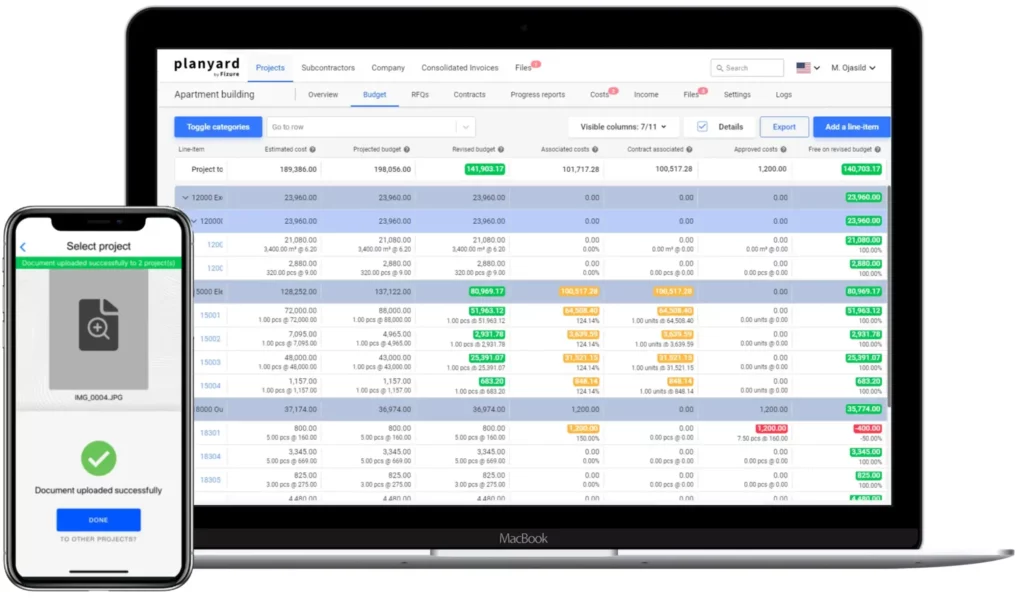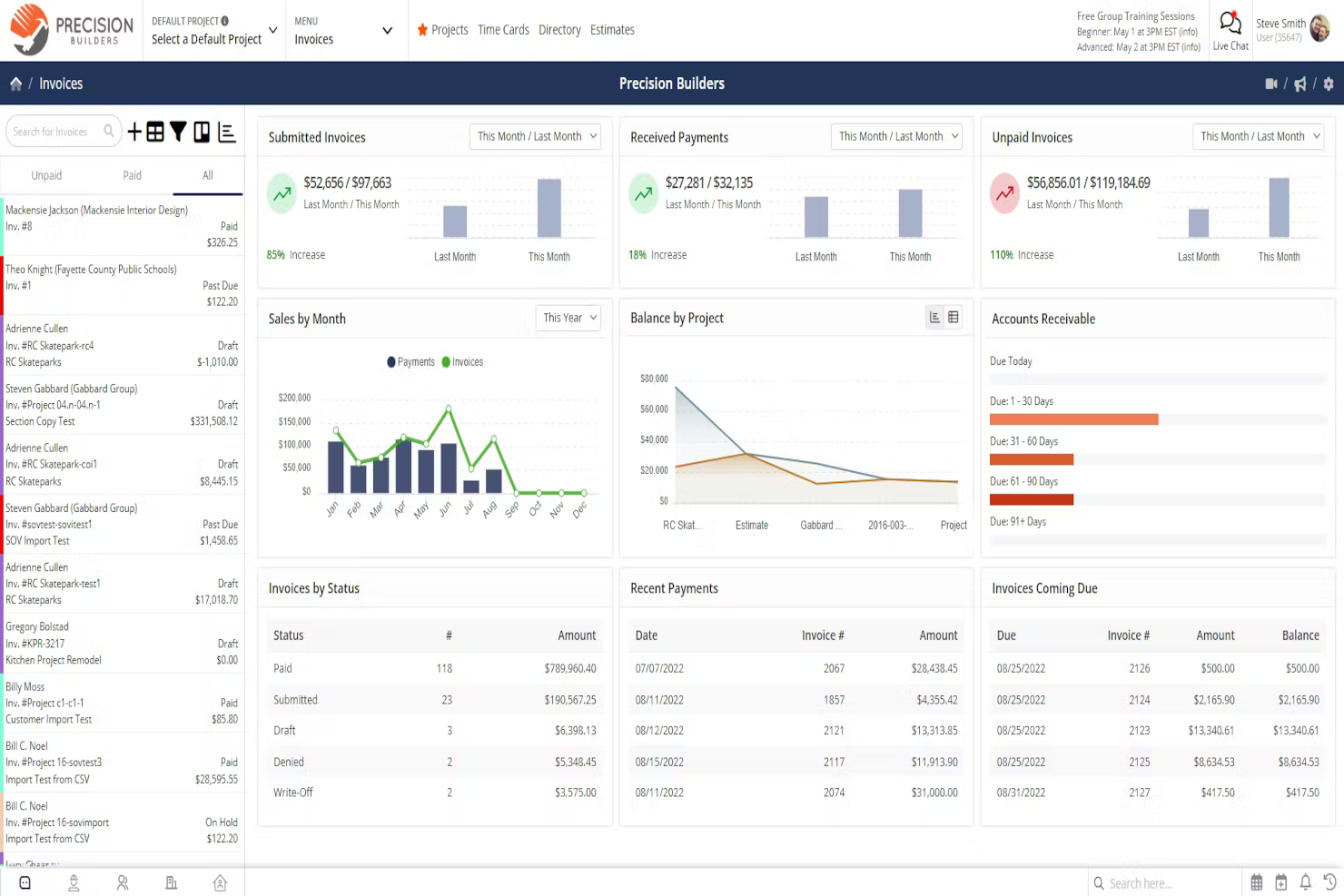Customized Building And Construction Administration Software Application: Optimizing Resource Allotment and Budgeting Techniques
In the world of contemporary construction monitoring, the value of tailored software application options can not be overstated. These sophisticated devices supply a nuanced technique to enhancing resource allocation and budgeting approaches, crucial parts for successful project implementation. By delving into the details of exactly how such software application can enhance source allotment methods and improve budget plan optimization techniques, a clear path toward heightened job efficiency arises. In this digital age where accuracy and effectiveness reign supreme, discovering the effect of customized building management software application on these vital facets uncovers a world of possibilities that might shape the future of the market.
Benefits of Tailored Software Application Solutions
Customized software services use a myriad of benefits to construction administration companies looking for to enhance efficiency and enhance procedures. One key benefit is the personalization of attributes to straighten with the specific requirements of the building sector (australian construction software). By customizing software program options to deal with job administration, organizing, budgeting, and source allowance, companies can maximize their operations and attain better performance. In addition, customized software program enables smooth assimilation with existing systems, lowering the demand for hand-operated information access and decreasing mistakes.
One more advantage of tailored software application services is the ability to give real-time understandings and analytics. Building management companies can take advantage of data-driven decision-making to keep track of task development, identify traffic jams, and make modifications promptly. This aggressive method enhances task outcomes and aids firms remain on track with timelines and budget plans.

Improved Source Allotment Approaches
Carrying out reliable resource appropriation methods is vital for construction administration companies to optimize job end results and make best use of productivity. Improved source allocation techniques entail strategically designating workers, tools, and materials to particular jobs to make certain optimal usage of sources. One vital aspect of improved source allocation is the ability to precisely anticipate task needs and allocate resources appropriately. By leveraging building monitoring software program that offers real-time tracking and reporting features, firms can dynamically change allowances as task requires advance, leading to improved efficiency and cost-effectiveness.
Moreover, improved resource allocation approaches allow building firms to recognize and attend to prospective bottlenecks or source restrictions proactively. By conducting normal analyses of resource application and efficiency metrics, managers can make data-driven choices to redistribute resources properly and stop delays. This aggressive technique not only boosts project timelines yet likewise minimizes the threat of budget plan overruns due to ineffective resource appropriation.
Budget Plan Optimization Techniques
To accomplish optimal economic efficiency in building and construction jobs, effective budget plan optimization techniques play a crucial role in making certain cost control and task success. One essential strategy is the establishment of a detailed task budget plan that assigns sources based on concern and crucial demands. By clearly specifying the scope of job, establishing sensible cost quotes, and continuously tracking expenditures, building and construction managers can determine possible cost overruns at an early stage and take rehabilitative activities. Additionally, carrying out worth design practices can assist enhance task costs without compromising high quality. This entails analyzing each project component to determine chances for price financial savings while keeping performance standards. Moreover, leveraging click for more historic information and sector standards makes it possible for construction managers to make informed decisions about budget allotments and determine areas where costs can be enhanced. By integrating these budget optimization methods into construction management software, project stakeholders can boost economic preparation, resource allotment, and overall budget monitoring to drive job success and earnings.

Effect On Job Efficiency
Maximizing construction administration software application can dramatically enhance job effectiveness by simplifying communication, enhancing partnership, and promoting data-driven decision-making. In addition, construction management software application can supply beneficial understandings through data analytics, allowing project managers to make informed decisions rapidly and precisely.
Additionally, the automation of regular jobs such as organizing, budget tracking, and resource allotment can free up useful time for task groups to concentrate on essential tasks, inevitably quickening task distribution. The capacity to keep an eye on job development in real-time and determine prospective bottlenecks enables proactive analytic, protecting against concerns from rising and creating delays. In general, the effect of tailored construction monitoring software program on task effectiveness is indisputable, more info here offering an affordable benefit by enhancing workflows and taking full advantage of efficiency.
Future Trends in Building And Construction Software Application
As the construction sector proceeds to develop, advancements in modern technology are shaping the future landscape of construction software program services. One significant fad imminent is the raising combination of artificial knowledge (AI) and device learning abilities in construction software program. These technologies have the possible to transform just how building tasks are managed by making it possible for predictive analytics, automated decision-making procedures, and improved job understandings.
One more future fad in construction software application is the expanding emphasis on cloud-based options. Cloud technology uses raised flexibility, scalability, and access for construction teams, permitting real-time collaboration and data sharing throughout task stakeholders. This shift in the direction of cloud-based software application is anticipated to boost project efficiency, simplify communication, and enhance overall task outcomes.
Moreover, the surge of Structure Information Modeling (BIM) is expected to view it now continue shaping the building and construction software program landscape. BIM software helps with 3D modeling, visualization, and data administration, bring about enhanced project coordination, decreased errors, and enhanced job end results. Welcoming these future fads in building and construction software will be essential for business seeking to remain competitive and drive advancement in the market.
Conclusion
Finally, customized building administration software offers countless advantages such as improved resource allocation approaches and budget plan optimization techniques. This software has a substantial influence on project efficiency by simplifying processes and improving total performance (evolve construction). As technology remains to advancement, future fads in building software are anticipated to further maximize resource appropriation and budgeting methods for construction jobs
Comments on “Construction Software for Effective Project Preparation and Implementation”